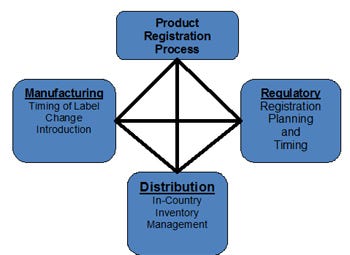Getting it Right the First Time: Clinical Evidence Requirements for CE Marking
Preparing a Clinical Evaluation is no small task. Having it rejected by reviewers, and doing it over again to correct deficiencies is not uncommon. Clinical evaluations are commonly problematic for industry. Improving the preparation process starts with tips from recent submissions.
March 25, 2013
A clinical evaluation is the assessment and analysis of clinical data pertaining to a medical device to verify its clinical safety and performance. The requirements for clinical evaluations are outlined in MDD 93/42/EEC Annex 1, but some manufacturers don’t have history with the process. They could be facing challenges and rejections by the reviewers.
A clinical evaluation must be performed by device manufacturers pursuing the CE Mark prior to marketing the device in the European Union.1 Clinical evaluations are also repeated periodically as new clinical safety and performance information about the device is obtained.
The manufacturer demonstrates the device achieves its intended performance and that the risks and any adverse events are minimized and acceptable when weighed against the benefits. Claims made about the device’s performance and safety are supported by suitable evidence.
With regard to postmarket activities, manufacturers are expected to implement and maintain surveillance programs that routinely monitor the clinical performance and safety of the device as part of their quality management system (QMS). The QMS should use data generated from safety reports, including adverse event reports, results from published literature, any further clinical investigations, and formal post market surveillance studies.
|
Source: European Commission: Clinical Evaluation: a guide for manufacturers and notified bodies, MEDDEV. 2.7.1 Rev.3, December 2009. Retrieved from: |
The stages of a clinical evaluation are outlined in Figure 1.
Collecting Data
The literature review must be complete, covering pre- and postmarket data and any clinical investigations. Common sources for data are as follows:
Competitive products.
Complaints.
MAUDE database.
Internal clinical testing.
MedWatch.
Published literature using common databases such as PUBMED and Science Direct, etc.).
In collecting data, it’s helpful to capture screen prints of searches, including the search terms and exact logic used in the search. Boolean logics such as “AND” and “OR” show repeatability and help the reviewers in analyzing the resulting clinical evaluation.
For published literature, it’s common for thousands of data sources to be identified.
The Clinical Evaluation Process |
|---|
|
Data Evaluation: The Heavy Lifting in Clinical Evaluations
After collecting the data, the next step is assessing the content and determining whether the data should be considered for the clinical evaluation.
A scoring table can be useful for determining whether to include data. For example, data might be scored on factors such as device equivalency, application equivalency, similarity of operator, and demographic equivalency.
For studies that pass the scoring table, each must be summarized on how they support the essential requirements (see sidebar “The Clinical Evaluation Process”). A common mistake is simply copying the conclusion of the study instead of how it relates to the essential requirements.
Case Study: Class II device for breast biopsies |
|---|
The manufacturer of the existing device changed notified bodies. The new NB alerted the firm to numerous deficiencies in the clinical evaluation. The manufacturer decided it was beneficial to submit a new clinical evaluation. The data collection resulted in 2211 papers. After an extensive analysis and scoring system, 27 papers were included in the clinical evaluation. A summary table was prepared for the clinical evaluation, which featured each paper and outlined the support of the essential requirements. The resulting clinical evaluation was approved without deficiency within 22 hours of submission. |
Insights from the Experts
The clinical evaluation must be recreatable by third parties based on the process and scoring system outlined in the report. If the notified body can’t recreate it, they have no recourse except to find deficiency.
Make it easy for the reviewers to check off each step. Highlight what they’re looking for relative to what you’re covering. Refer to guidances and standards. The European Commission: Clinical Evaluation: a guide for manufacturers and notified bodies features helpful appendices.
Common errors can include the following:
Missing inclusion or exclusion criteria.
Omitting applicable papers.
Summarizing papers instead of evaluating them. Although a summary is required, the more important (and often omitted) portion is to explain how the data support the essential requirements.
Forgetting summary tables.
Forgetting a concluding argument. Explain how the document fulfills the requirements for the clinical evaluation.
Conclusion
Clinical evaluations include the assessment and analysis of the medical device’s clinical data to verify its clinical safety and performance. The stages are well-defined but can be intensive. A thorough clinical evaluation can involve thousands of data sources and significant time for proper assessment. Manufacturers should submit evaluations that are recreatable and make it easy for reviewers to follow.
Notes
MDD 93/42/EEC Annex 1 (Medical Device Directive), amended by the 2007/47/EC, outlines the Essential Requirements that have been established by the European Union. The 2007 amendment includes the clinical requirement in the general section (essential requirement 6a) and does not allow an answer of “not applicable.”
Chris Henza is a Regulatory Affairs Specialist with Regulatory Compliance Associates, Inc. She specializes in Clinical Evaluations.
About the Author(s)
You May Also Like


